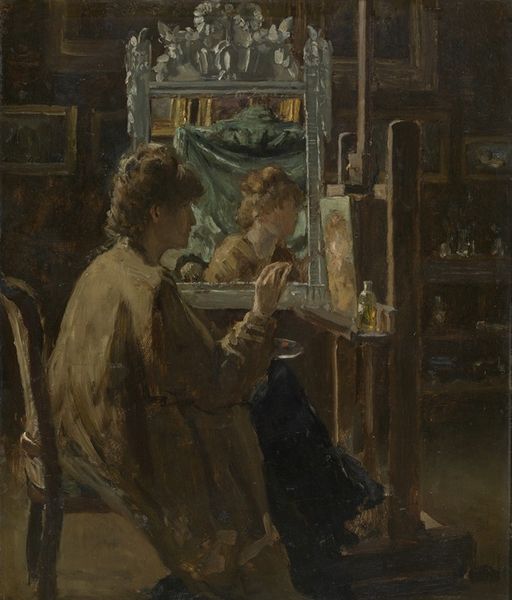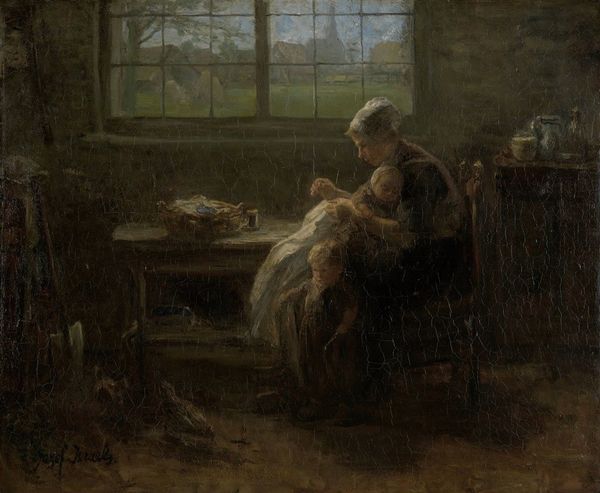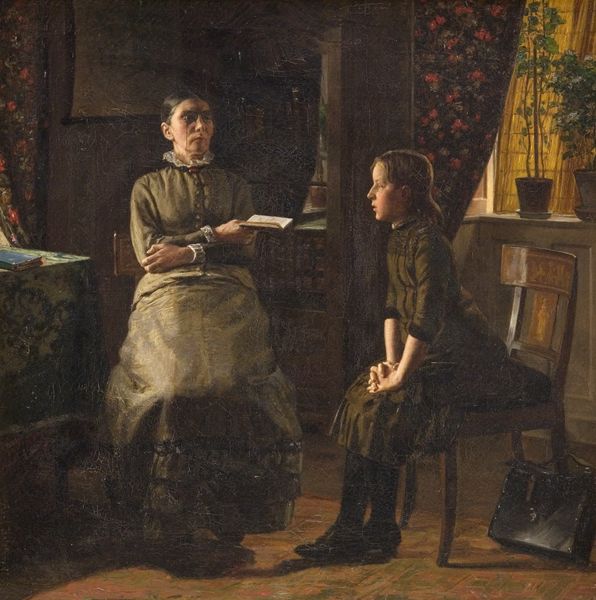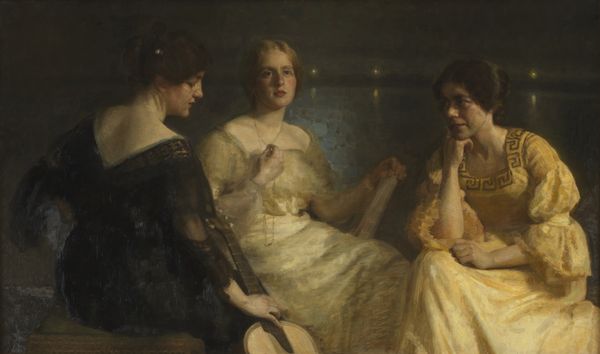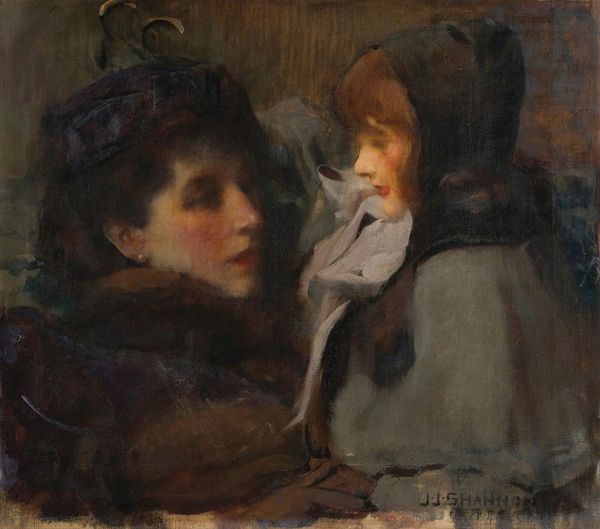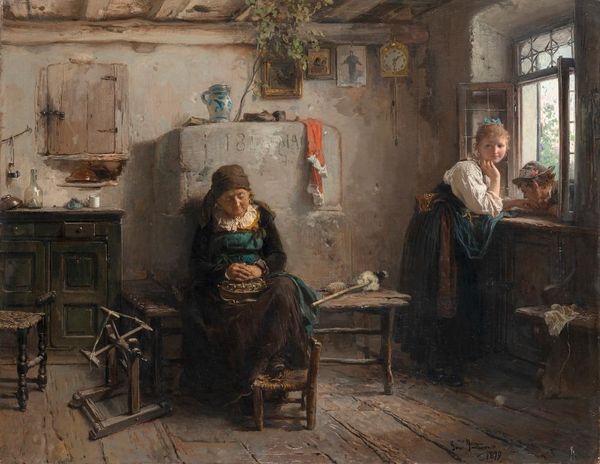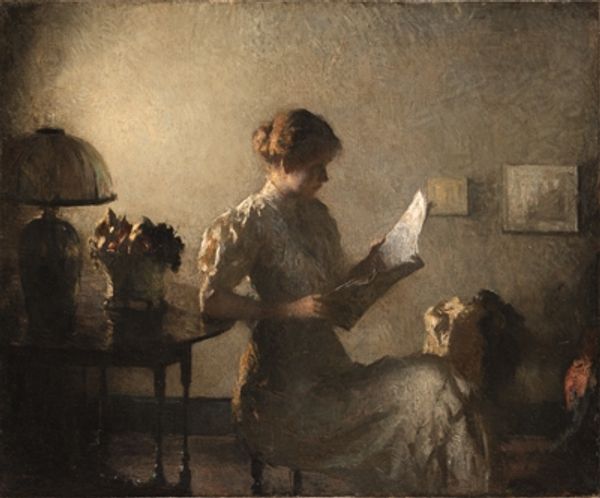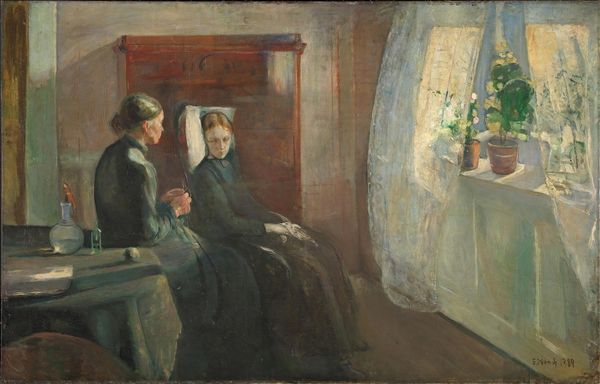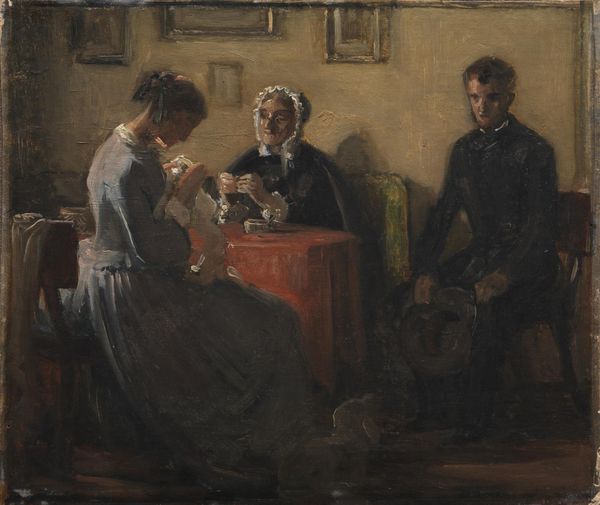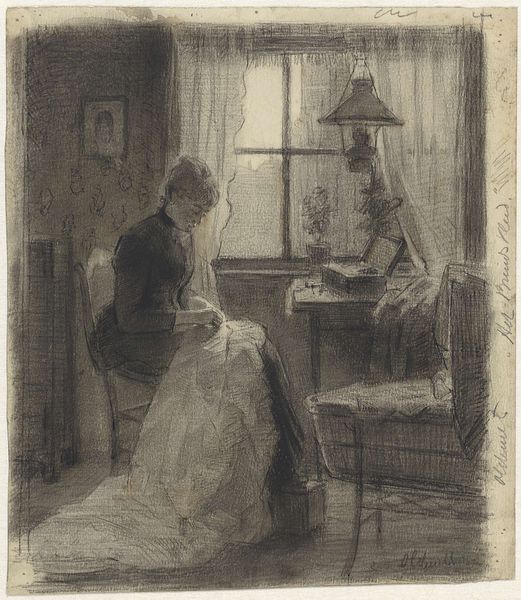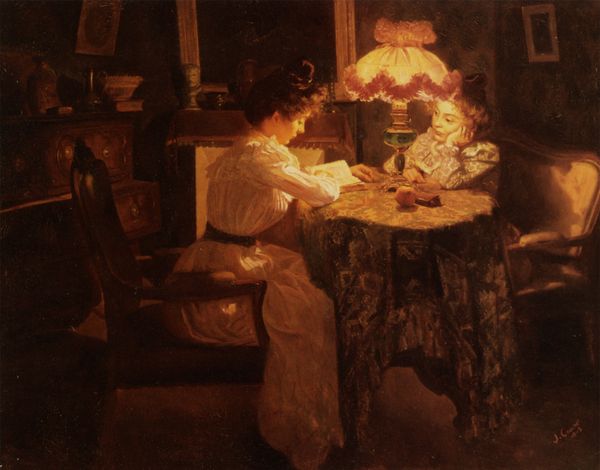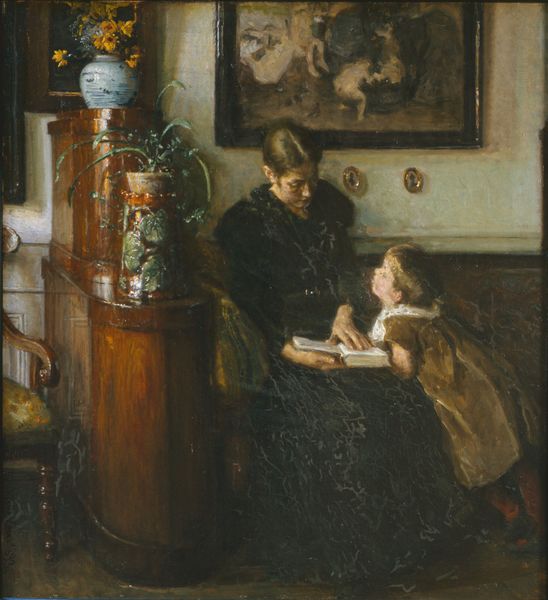
Dimensions: 31 1/4 x 36 5/8 x 4 1/2 in. (79.38 x 93.03 x 11.43 cm) (outer frame)
Copyright: No Copyright - United States
Curator: This is "Two Women Visiting," an oil on canvas work attributed to Edward Antoon Portielje, dating from circa the 19th century. It's currently held in the collection of the Minneapolis Institute of Art. Editor: It strikes me as incredibly dark. Not only the palette but there’s also a density of objects weighing down the space, all hinting at a labor of keeping. Curator: Precisely. Consider how the formal elements underscore this feeling of weight. Note the composition’s structure. The two figures are positioned asymmetrically. The lines created by their bodies and the architectural setting pull the gaze downwards, grounding it in the domestic space. Editor: While you consider composition, my eye goes to the clothing, rough spun by the look of it, that hints at hours dedicated to creation and upkeep. The room's darkness only serves to emphasize how much material maintenance occupies the space. Curator: Good point. It also affects how we read the symbolism. What at first appears to be a genre scene, perhaps influenced by earlier Dutch masters, can also be seen as a study in contrasting psychological states rendered through light and shadow. Editor: A psychological study is all well and good, but doesn’t it matter where that darkness comes from? Windows are scarce. Ventilation probably isn’t great, making the act of reading that letter, or making any kind of art, even more difficult. Curator: But look at how the light from the window frames the subjects—creating a stage on which intimacy plays out. The textural quality of the impasto further adds depth to our visual experience. Editor: Still, I can’t help but think of what women like these historically used to manufacture. Imagine the embodied labor—spinning flax, weaving cloth, then constructing clothing in poorly lit rooms. That affects one’s reading far more. Curator: It adds context. However, the brushstrokes here speak to a deeper reading: the subtle tension between figures, and the use of chiaroscuro. The painting generates its effects not just through what's depicted, but how. Editor: Perhaps... although the reality of their labor can’t simply disappear when analyzing brushstrokes. It persists, affecting the air in the room, how they move, even the way we see. Curator: Point taken. The act of observing these women now grants us a better understanding of life’s materiality for many in the past. Editor: Indeed, this piece underscores the necessity of looking closer to not only unravel forms but also reflect upon the material weight embedded in the act of art itself.
Comments
No comments
Be the first to comment and join the conversation on the ultimate creative platform.
